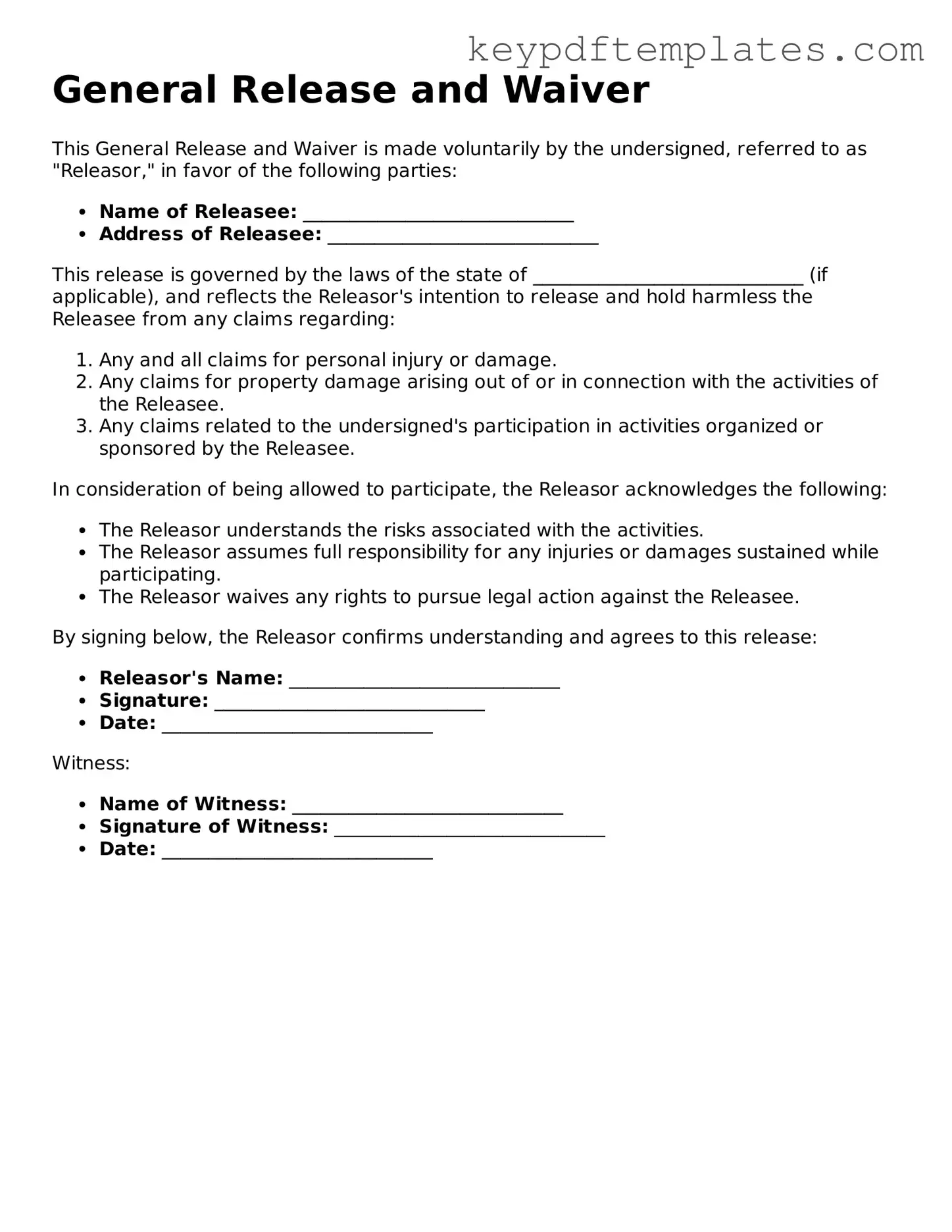Printable General Release and Waiver Template
The General Release and Waiver form is a legal document that allows one party to release another from liability for certain actions or claims. By signing this form, individuals acknowledge that they are waiving their rights to pursue legal action related to specified events. Understanding this form is crucial for anyone looking to protect themselves while engaging in various activities.
Modify Document Online
